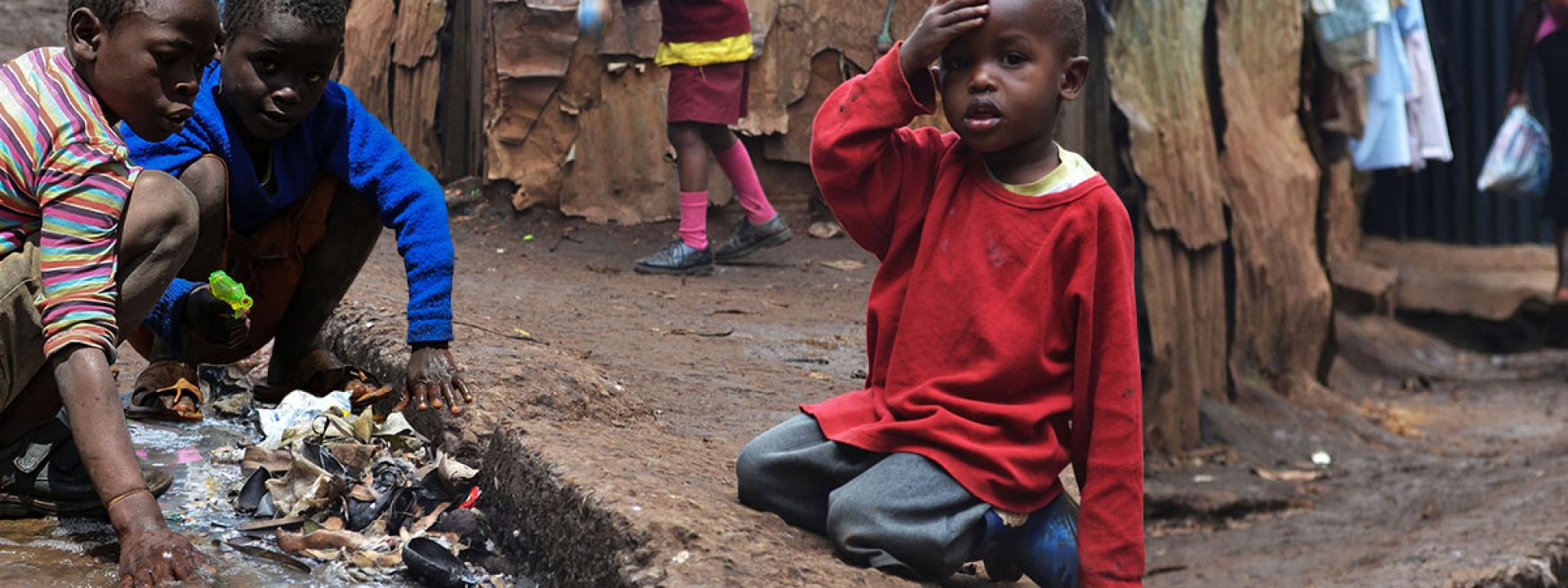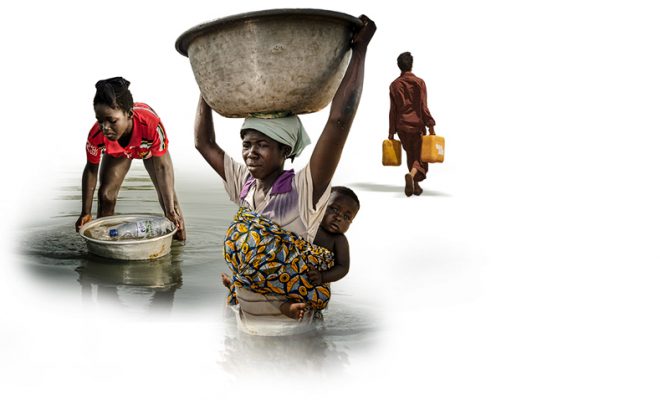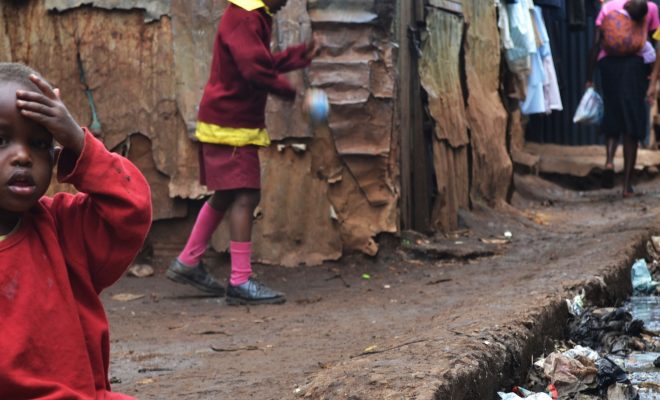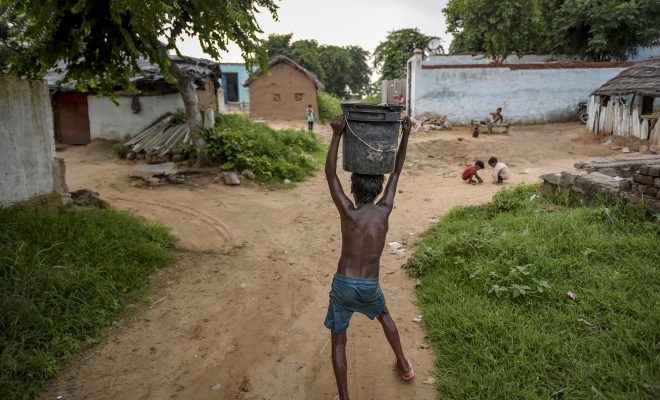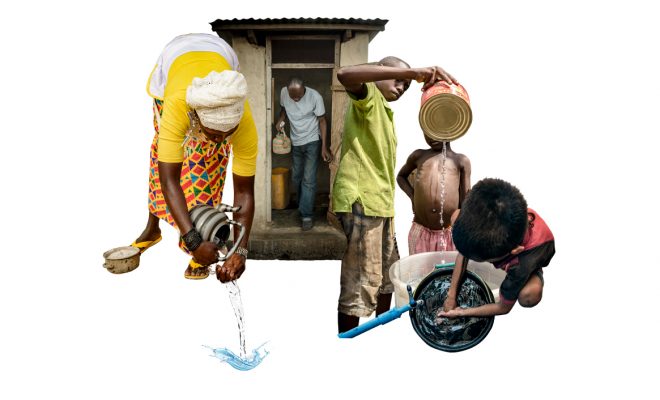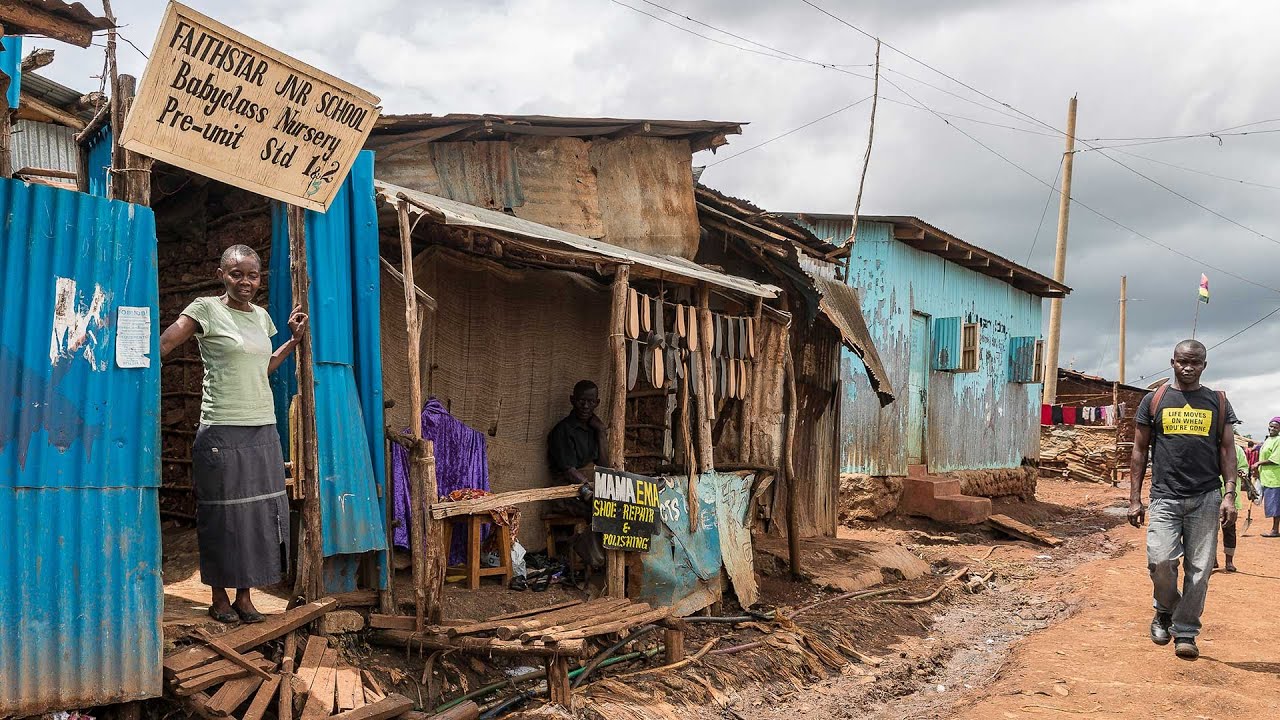
“Decentralized sanitation” can be defined as the safe collection of wastewater from individual buildings or small areas for controlled on-site treatment, allowing for the recovery of waste in a manner that is safe for people and the environment and even the reuse of water. It is the opposite of “centralized sanitation,” in which wastewater is collected from large municipal or regional service areas and transported through a network of sewers to large wastewater treatment plants (WWTPs) for its safe return to the environment.
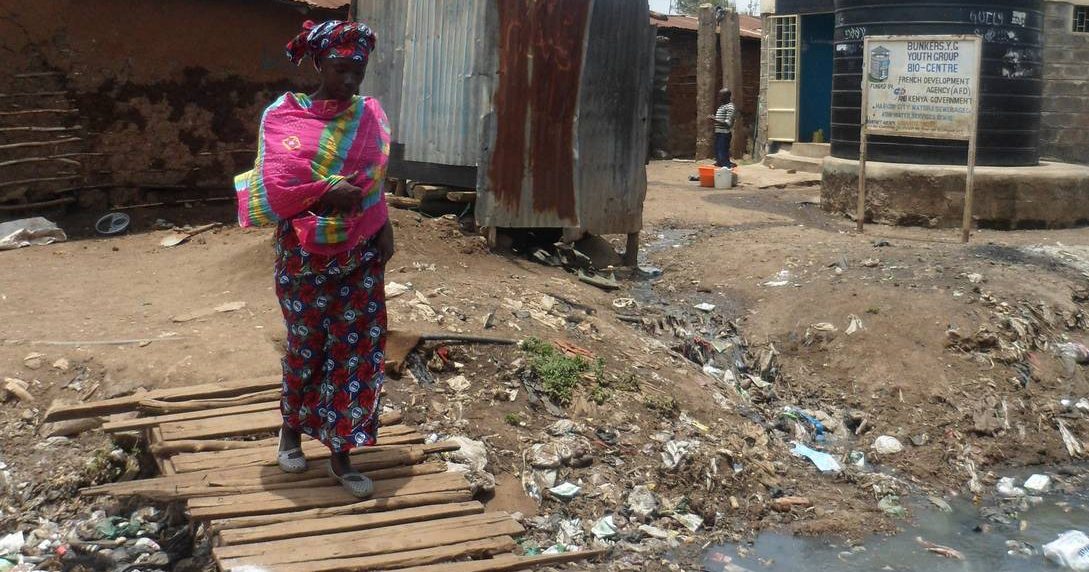
Achieving universal access to sanitation requires us to develop decentralized alternatives. © SuSanA Secretariat
The lack of sanitation, a severe problem that remains unsolved
Sewage has always been an unavoidable sign of our passage through history. Even today, despite remarkable technological advances in treatment systems, we have not been able to solve the severe problems caused by sewage. Adequate sanitation does not reach everyone, and this has become one of the most challenging problems in recent decades that threaten the health of humanity and the environment.
Between 80% and 90% of the planet’s wastewater is not treated, and some 1.7 billion people, almost a fifth of the world’s population, do not have access to safely managed sanitation infrastructures. In addition to the economic losses this entails, this deficiency causes 345,000 children to die yearly from diarrhea. According to the WHO, this is the third leading cause of death in children under five worldwide, after problems in childbirth and pneumonia.
The lack of sanitation in the world is mainly due to the inability of developing countries to generate the necessary funding. The large pockets of poverty in the ever-growing slums, the neglect of remote rural areas where open defecation is still practiced, and the high degree of deterioration of school facilities create situations that are hostile to investment. A setback for the full attainment of SDG 6 by 2030.
The limitations of sewerage in slums
The horizontal sprawl of cities, which takes its worst form in the slums of the least developed countries, is a significant challenge for SDG 6. According to the World Bank, in 2017, 29% of the world’s urban population lived in slums, the vast majority without household water supply, electricity, or sanitation facilities. In some countries, such as some in sub-Saharan Africa, more than 90% of the urban population now lives in these slums.
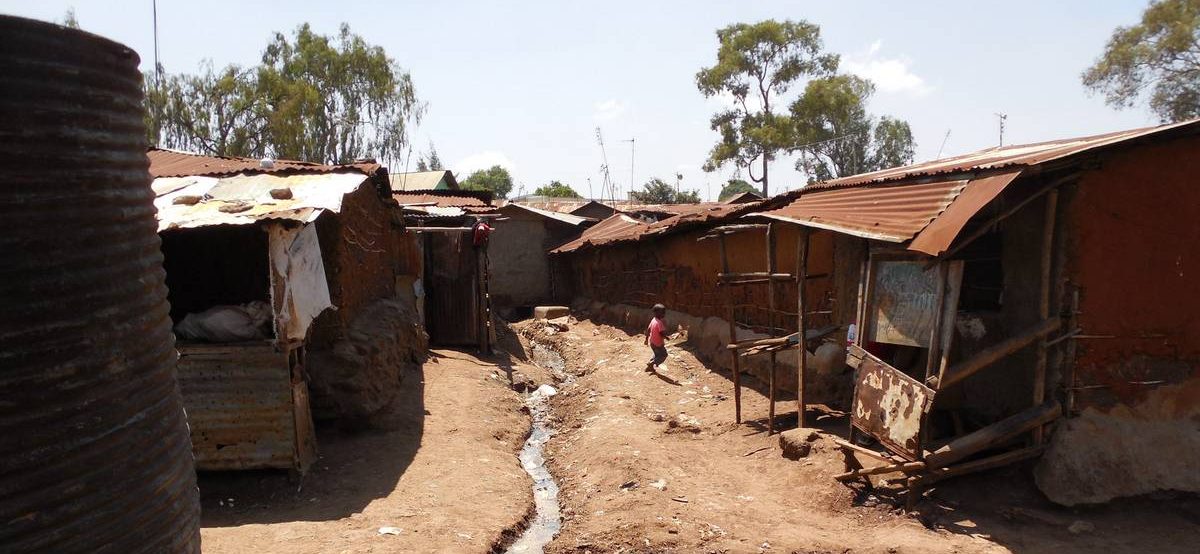
The horizontal sprawl of cities, which takes its worst form in the slums of the least developed countries, is a significant challenge for SDG 6.© SuSanA Secretariat
How can sanitation be brought to these population centers? The very nature of informal neighborhoods, many of which are destined to disappear one day in the planning of their governments, rules out the construction of sewerage networks, especially in slum areas. Decentralized systems, capable of being tailored to the socio-economic and climatic characteristics of the areas in need, are a very effective and practical option for the population of these neighborhoods to access sanitation.
Two examples explain decentralized sanitation systems: the “bio-centers” in Kibera and the DEWATS system in a hospital in Chengelpattu.
The “bio-centers” in Kibera
Next to Nairobi, Kenya’s capital, is Kibera, one of the world’s largest slums. The exact number of inhabitants is unknown, although UNHCR and UN-Habitat estimate that it is close to one million, with an annual growth rate of 17%. There, Umande Trust, an organization that was born in the neighborhood itself with the specific purpose of solving the severe sanitation problem, has developed the construction of 19 “bio-centers,” facilities where the inhabitants go to relieve themselves in safe latrines and where they have clean water for hand washing and showering.
Waste is discharged into an underground tank built under each building, from which biogas is obtained and channeled to a community kitchen available for people to cook with clean water. The waste, anaerobically digested by microorganisms, is removed from the tank once a year and sold as agricultural fertilizer. The profits are invested in the community, managed by a committee elected from among the users of each bio-center. Umande Trust is implementing these entirely community-led facilities in other slums in Kenya and the rest of Africa.
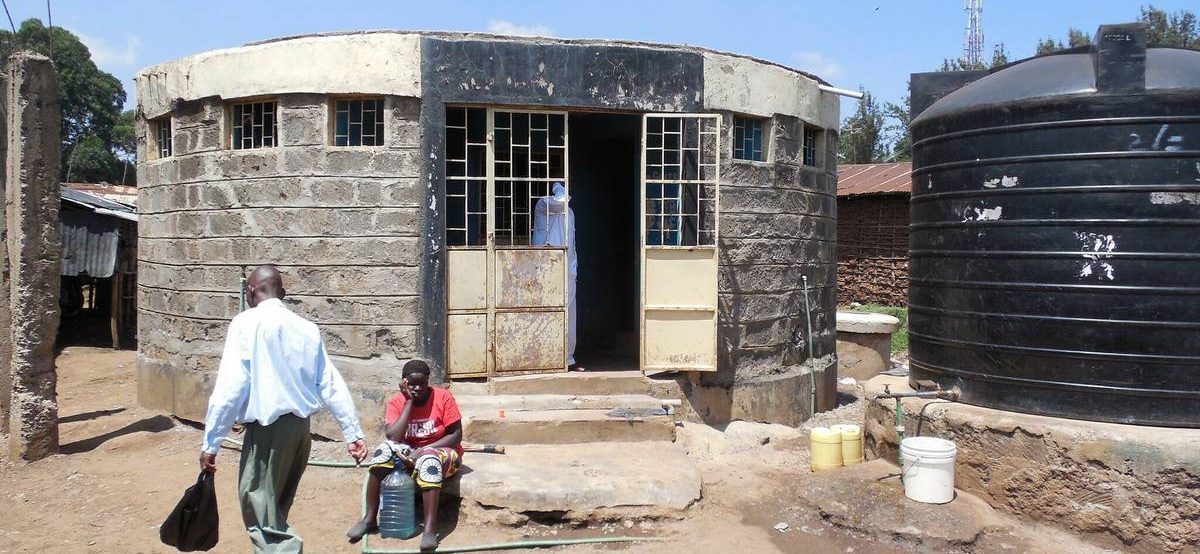
In Kibera, one of the world’s largest slums,Umande Trust, an organization that was born in the neighborhood itself with the specific purpose of solving the severe sanitation problem, has developed the construction of 19 “bio-centers”. © SuSanA Secretariat
The DEWATS system
Another decentralized system is based on collecting wastewater from selected buildings or latrines and its short-haul transport to a treatment plant. A good example is DEWATS (Decentralized Wastewater Treatment Systems), which is the basis of a project we have developed with World Vision in a hospital in Chengelpattu, India.
A simple pipeline transports the hospital’s wastewater to prefabricated tanks for sedimentation and natural biological degradation by anaerobic microorganisms, a “nature-based” solution usually adopted in hot climate areas for a relatively low and fluctuating waste flow as is the case of the hospital. Once treated, it is safely discharged into the environment following government regulations. This also makes it possible to use the wastewater to obtain biogas and organic fertilizers as an alternative. The system’s simplicity does not require specialized personnel for its operation and maintenance, which can be carried out by the hospital’s staff after a short training process.
Beyond hospitals or specific buildings, the DEWATS system can be applied to small communities on the outskirts of cities and in rural areas. It is a cost-effective technology that is easy to install and allows the use of local labor. The energy cost is minimal and can be obtained from solar or wind energy.
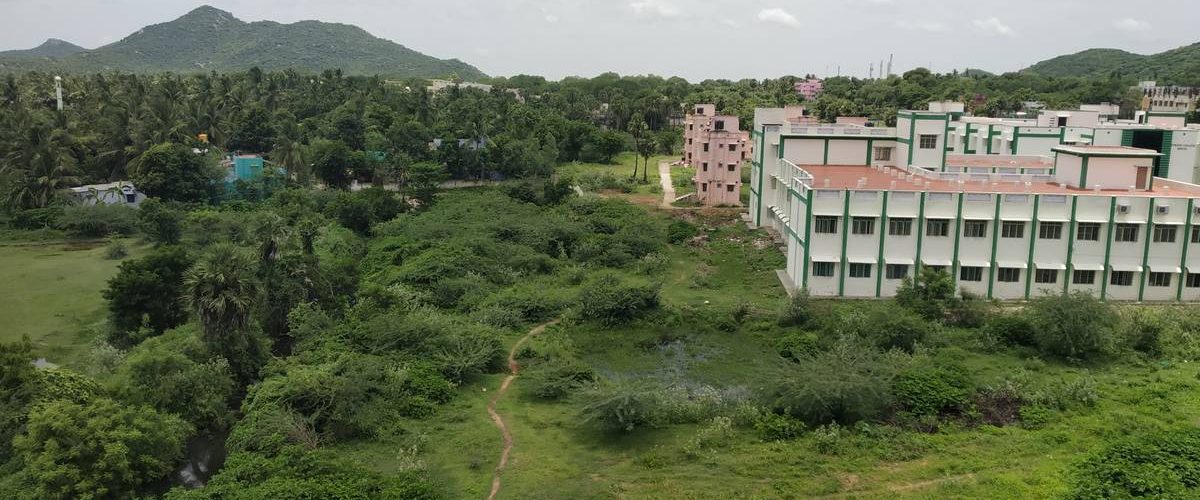
A good example of decentralized system is DEWATS (Decentralized Wastewater Treatment Systems), which is the basis of a project we have developed with World Vision in a hospital in Chengelpattu, India.
Beyond sanitation: towards a collaborative circular economy
Decentralized systems make it possible to develop and implement new low-cost technologies and develop the circular economy’s benefits: waste acquires value, and the whole system boosts the participation of other local sectors, such as agriculture with fertilizers or biogas for energy and transport. They are also an element of community cohesion and empowerment by fostering participation and encouraging self-management and knowledge transfer. They are a vital link for sustainable sanitation to reach everyone.


